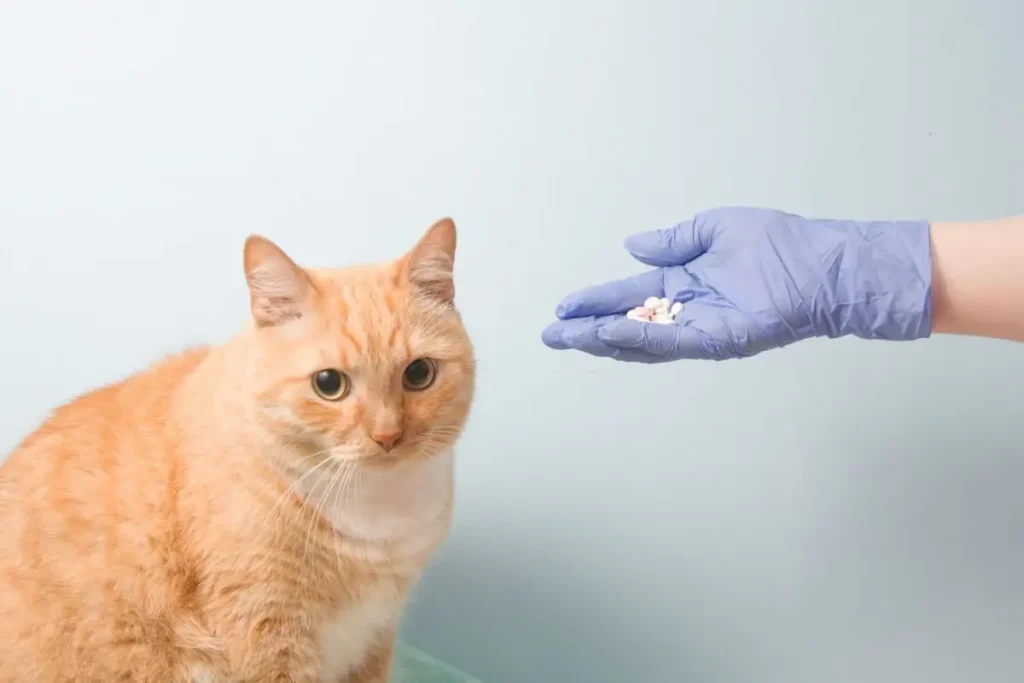
Can cat litter cause allergy symptoms in humans? Do you think you are allergic to your cat? However, you may be allergic to cat litter. Cat litter comes in a wide variety of materials and may also contain additives or additional chemicals.
Since human allergies are triggered by substances in the environment, the cat litter you are using could be the cause of the allergic reaction you are experiencing.
What Are Human Allergies?
What exactly are human allergies? Allergies, also known as allergic diseases, are a series of conditions caused by hypersensitivity of the human immune system to something in our environment and usually cause few problems in most people.

In other words, a substance known as an allergen triggers an unusually strong immune response in which our immune system fights off a perceived threat that would otherwise be harmless to the body. As we will see below, cat litter can contain some allergens.
Allergies can affect anyone, at any age. Even if you have used a certain type of litter for a long period of time without experiencing an allergic reaction, this does not mean that you will eventually become allergic to it.
Furthermore, it is assumed that there is a strong genetic link in the development of allergies. In other words: If your parents are allergic to cat litter, you probably will be too.
It is also interesting to note that cats can also develop allergies to cat litter just like humans. The causes, symptoms, and treatment are very similar.
What Causes an Allergic Reaction to Cat Litter?
Many cat litter boxes are made of clay and are notoriously dusty. Dust is in fact a well-known airborne allergen that can cause allergic reactions when it comes into contact with the eyes, nose, or lungs.

Some cat litters contain fragrances or other additives that help control odors. These fragrances are also potential allergens that can trigger your allergies.
Additionally, some cat litter may contain other minerals or chemicals that can trigger allergies and, in some cases, even more serious respiratory illnesses.
An example is silicon dioxide, also known as silica. It is a chemical compound present in clay and numerous other minerals. Inhaling finely divided crystalline silica dust can lead to medical problems such as asthma or bronchitis, as the dust settles in the lungs and continually irritates them.
Cat Litter Allergy Symptoms to Look Out For
Those who are allergic to cat litter may notice a runny nose, sneezing, red eyes, shortness of breath, or asthma. In some cases, you may also experience hives on your skin. As already mentioned, these symptoms are caused by our immune system, which recognizes some substances present in the cat’s litter as harmful and tries to eliminate them.

Additionally, to determine whether the cat litter you are using is actually the cause of your allergy, consider the following:
If you notice the above allergy symptoms during or shortly after cleaning the litter box, this is a good clue that the allergic reaction you are experiencing is likely caused by the cat litter. The same goes if you notice your allergies getting worse soon after using the litter box.
If you are not sure about whether the cat litter is the cause of your allergies, the best way to answer the question “Am I allergic to the cat litter?” is to have an allergy test performed by a qualified medical professional.
If you’re not sure whether cat litter is the cause of your allergies, the best way to answer the question “Am I allergic to cat litter?” is to undergo an allergy test performed by a qualified doctor.
Reducing or Getting Rid of Cat Litter Allergies
The best way to help reduce or even completely get rid of allergies related to litter is to change the kitty litter you are using. There are a number of hypoallergenic varieties on the market which are relatively unlikely to cause an allergic reaction.

In general, these are cat litter that are low on or even have no dust at all. Examples are cat litter made from crystals/pearls, recycled newspapers, pinewood, or whole-kernel corn.
When switching cat litter make sure to do it gradually by mixing the old litter with the new litter. This will help acclimate your cat to the new feel and smell. Also, bathe your cat or wipe the fur with hypoallergenic wipes so it is free of old litter dust.
If for some reason it is not possible to switch the cat litter you are using, the basic rule is simple: avoid contact with the litter material.
Below you can find some general tips on how to achieve this.
- Wash your hands thoroughly after handling your cat.
- Clean the litter box and surrounding area on a regular basis. This means scooping the litter at least once a day and changing all litter once a week.
- Place the litter box in a well-ventilated area that has vents to the outside.
- Don’t put the litter box in frequently trafficked areas or close to air ducts.
- Make a habit of ventilating your house/apartment for about 5-10 minutes a day by opening all windows and doors (don’t apply on pollution or high-pollen days).
Some allergies can also be reduced with the help of medication. Always consult with your local physician regarding the different options treating allergies and asthma.
In short, yes cat litter can trigger allergies and their accompanying symptoms. The easiest way to treat them is by trying out a different kind of cat litter.
Do you know of any other signs that might indicate that someone is allergic to cat litter? And what has worked for you in solving your cat litter allergy?
Types of Cat Litter
Clay-Based Cat Litter
Clay-based cat litter is one of the most common types of litter available. It is known for its absorbency and odor control. However, it can also produce a significant amount of dust, which can exacerbate allergy symptoms.
Silica Gel Cat Litter
Silica gel cat litter is made from silica crystals and is known for its excellent absorbency. It produces less dust than clay-based litter, making it a better option for people with allergies.
Biodegradable Cat Litter
Biodegradable cat litter is made from natural materials such as recycled paper, wood, or corn. It is generally more environmentally friendly and produces less dust than traditional cat litter.
Allergy Symptoms in Humans
Respiratory Symptoms
Common respiratory symptoms of cat litter allergies include sneezing, coughing, wheezing, and shortness of breath.
Skin Irritation
Contact with cat litter can sometimes cause skin irritation, such as redness, itching, or rash.
Eye Irritation
Cat litter dust can irritate the eyes, leading to symptoms such as redness, itching, and watering.
Reducing Allergy Symptoms
Use Dust-Free Cat Litter
Opt for dust-free cat litter to reduce the amount of dust that can trigger allergy symptoms.
Wear a Mask and Gloves
When handling cat litter, wear a mask and gloves to minimize exposure to allergens.
Regularly Clean the Litter Box
Frequent cleaning of the litter box can help reduce the buildup of dust and allergens.
Consider Allergy-Friendly Cat Litter
If you have allergies, consider using hypoallergenic or low-dust cat litter options.
Conclusion
While cat litter can sometimes cause allergy symptoms in humans, there are steps you can take to reduce your exposure to allergens. By choosing the right type of cat litter and practicing good hygiene, you can minimize the risk of experiencing allergy symptoms.
FAQs: Can Cat Litter Cause Allergy Symptoms in Humans?
1. Can cat litter cause asthma in humans? Yes, cat litter dust can trigger asthma symptoms in some people, especially those with existing respiratory conditions.
2. What are the signs of cat litter allergies in humans? Signs of cat litter allergies in humans include sneezing, coughing, wheezing, skin irritation, and eye irritation.
3. Is it safe to use clay-based cat litter if you have allergies? Clay-based cat litter can exacerbate allergy symptoms in some people due to the dust it produces. It may be safer to opt for a dust-free or low-dust alternative.
4. Are there any natural alternatives to traditional cat litter? Yes, there are natural alternatives to traditional cat litter, such as recycled paper, wood, or corn-based litter. These options are often less likely to cause allergies.
5. Can cat litter allergies be prevented? While cat litter allergies cannot always be prevented, you can reduce your risk by choosing low-dust cat litter, wearing protective gear when cleaning the litter box, and maintaining good hygiene practices.
We’d love to hear your experiences.


